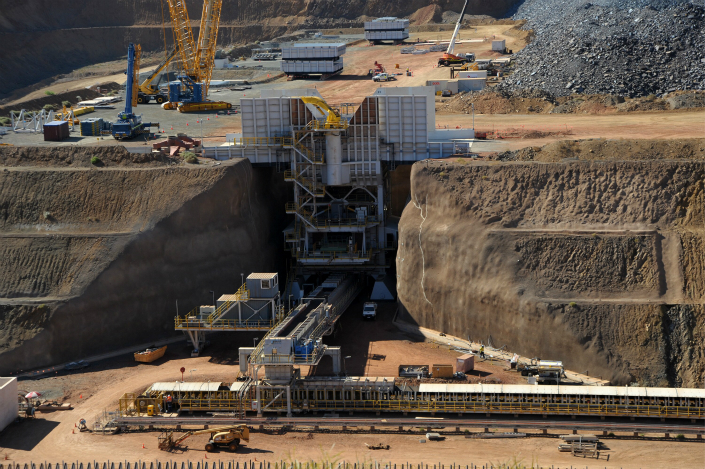Troubled Australian Ore Project Clips Citic’s Earnings

It was China’s largest overseas mining investment. But the Sino Iron project in Australia quickly turned into a money-losing pit that is still biting state-owned conglomerate Citic Ltd.
“The risk (of a production halt) still exists” at the Sino Iron project, Chang Zhenming, chairman of Citic, said Wednesday at a news conference about the company’s 2017 earnings.
Citic wrote down HK$7.2 billion ($918 million) of the Sino Iron project in the financial year of 2017. That brought the total write-downs on the project to HK$40.6 billion over the past four years, according to Citic.
Chang said the Sino Iron project has “made progress” in increasing production and shipment, as well as lowering its costs over the past year. But the project faces “unpredictable factors” that may threaten its long-term development, Chang said.
These include Citic’s legal battles with the mine’s owner, Mineralogy, which is owned by businessman Clive Palmer. Last year, a local court ruled that Mineralogy was entitled to a so-called royalty B payment on Sino Iron’s magnetite and ordered the Chinese company to pay more than $150 million in unpaid royalties and accumulated interest. Citic appealed the court’s decision.
The financial implications of the judgment, along with other issues such as challenges to secure approval for land access, are serious, said Chang.
Chang said Citic will work to “prevent the worst possibility” in the Sino Iron project — closing the mine.
If the mining project had to be shut down, Citic might face a bill of $1.15 billion to restore the environmental quality of the land, an industry analyst said.
The troubled project’s story dates back to 2006, when Citic paid $450 million for 25 years of mining rights to the iron ore mine at Cape Preston, Western Australia. The Sino Iron project was launched when soaring Chinese steel production was pushing up Australian iron ore prices to new heights.
But the project ran years behind schedule and its investment budget soared by more than five times its original $3 billion. At the same time, slumping prices for iron ore undermined the project’s profitability.
The first ship loaded with ore powder from the project arrived in China in December of 2013, more than four years behind the original schedule.
In 2017, Sino Iron shipped 17 million tons of ore power to China, up from 13 million tons in 2016, according to Citic.
At the news conference, Chang also confirmed that Citic has held talks with private energy conglomerate CEFC China Energy for a stake investment.
Citic reported a net profit of HK$43.9 billion in 2017, up 1.8% from the previous year. The company’s mining business posted a HK$9.9 billion loss, mainly due to the Sino Iron project, while other business segments, including financial services, manufacturing, construction and real estate, posted net profits.
Contact reporter Han Wei (weihan@caixin.com)

- 1Cover Story: China’s AI Titans Escalate Battle for Control of Digital Gateways
- 2Weekend Long Read: When China Speed Meets Brazil Rhythm
- 3In Depth: Bank of China Executive Probed in Expanding Zhejiang Banking Crackdown
- 4CATL to Roll Out Sodium-Ion Batteries in 2026 to Cut Lithium Reliance
- 5China’s Airport Retail Gets Overhaul as Sunrise Drops Out, State Giants Step In
- 1Power To The People: Pintec Serves A Booming Consumer Class
- 2Largest hotel group in Europe accepts UnionPay
- 3UnionPay mobile QuickPass debuts in Hong Kong
- 4UnionPay International launches premium catering privilege U Dining Collection
- 5UnionPay International’s U Plan has covered over 1600 stores overseas






